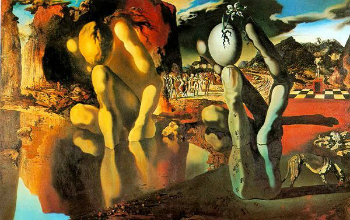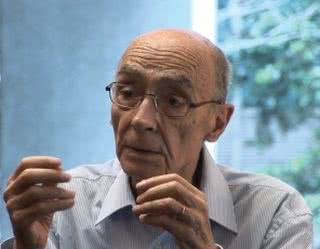Jackson Pollock (1912-1956) was an American artist very important to the world of arts in the first half of the 20th century.
He can be considered one of the creators of abstract expressionism or action painting. This aspect of art valued, above all, the spontaneous impulse, in addition to giving great importance to the bodily and gestural movement at the time of the work's creation.
Pollock is remembered as the artist who made the most of the technique known as "drip". In this method, he poured liquid paint onto the canvas, creating abstract compositions with tangled lines and unpredictable patterns.
He was largely influenced by European modernist avant-gardes, while becoming a reference for new generations of artists.
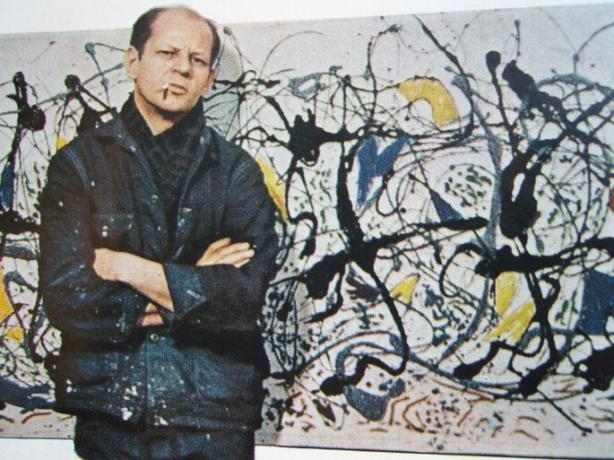
Jackson Pollock Biography
Paul Jackson Pollock was born in Cody, USA, on January 28, 1912.
Son of Stella May and LeRoy Pollock, he was the youngest of the couple's six children. His father worked in agriculture and later was a government official as a surveyor. His mother came from a family of weavers and was a seamstress.
When Jackson was just 10 months old, the family moved and, from then on, Pollock resides in several American cities, but he never returned to Cody again.
Pollock was a complicated young man and was expelled from school in 1928. Later, he enrolls in High School Arts Manual from Los Angeles, California, from which he is also banned.
He begins to study art properly in 1930, when he goes to New York, following in the footsteps of his brother Charles Pollock.
At that time, the brothers study at the Art Students League with the American artist Thomas Hart Benton, an important muralist who brought the regionalist theme in his works.
artistic career
In 1936, Pollock came into contact with liquid paint during an experience in New York with the Mexican artist David Alfaro Siqueiros.
In 1940, the artist created the works Male and Female and Composition with Pouring I, in which he uses several techniques, including that of pouring paint onto canvases.
Between 1938 and 1942, he was involved in an artistic project developed by Works Progress Administration, an important agency that carried out public works projects and employed many artists in the 1930s.
It is during this period that the artist seeks psychological help to treat his alcohol dependence, undergoing Jungian psychotherapy with Dr. Joseph Henderson and later with Dr. Violet Staub by Laszlo.
The treatment with Henderson was based on Pollock's own work. With art therapy techniques, the doctor involved the artist's drawings and paintings in the treatment, in order to work with various Jungian concepts, such as the collective unconscious.
In 1943 Pollock painted a mural for the facade of the house of Peggy Guggenheim, an important art collector and patron. The art was made on a huge canvas and integrated into the house. Critics of the time raved about and considered Pollock's work to be extraordinary.
Dripping (or dripping)
Pollock has the idea of creating by arranging large canvases on the studio floor and using his entire body as an instrument to create abstract compositions.
This way of painting was inspired by the technique dripping(in Portuguese, drip), invented by Max Ernst, artist who was part of surrealism.
Pollock, however, was the artist who most used this method, being very important for its development. The screen "One" (1950), an important work of the action painting.

One of the most significant features in this way of painting was the fact that the artist needed to "enter" the canvas, perform big movements and imprint your gesture, almost like a dance, transmitted in the form of lines, splashes and spontaneous textures.
In the end, the work itself was also composed by the moment of creation, similar to a performance.
In 1951, Pollock stopped making paintings using the method.
Lee Krasner's Influence on Pollock's Art
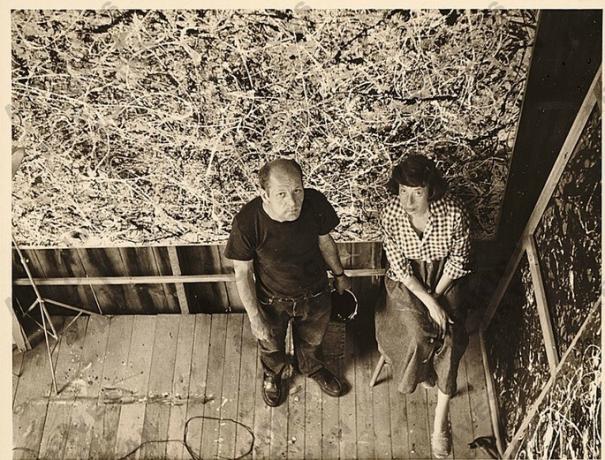
Jackson Pollock participated in an exhibition at McMillen Gallery, in 1942. The same show also featured works by artist Lee Krasner, who was impressed by Pollock's works. She then decided to pay the artist an unexpected visit.
From there, the two start a romance and get married in 1945 in an intimate ceremony, with only two witnesses.
Later, they manage to buy a house with a loan from Peggy Guggenheim. The residence had a barn, which Pollock turned into his studio. Krasner, in turn, produced in a smaller room, inside the house.
She was essential to her husband's work, heavily assisting and influencing her production. This finding only began to be considered in the 60s, with the advance of the feminist movement.
The artist had great knowledge about the modernism and it was in line with what was expected of an innovative art. She then directs and updates Pollock, who adjusts her production to become more contemporary.
In addition, Krasner put Pollock in contact with various collectors, gallery owners and art critics, which was essential for him to consolidate.
Krasner's output was underestimated and there was an unfair suspicion that she incorporated Pollock's creative elements into her work.
Due to these events, the artist found it difficult to establish herself in the artistic milieu without her work being seen as an "annex" to her husband's work.
Pollock's last years
Pollock stopped painting in 1955, and started producing sculptures.
From 1956, his marriage to Krasner goes through turmoil, due to alcoholism and his infidelity to Ruth Kligman, another artist of abstractionism.
On August 11, 1956, Pollock suffers a car accident while driving drunk, dying at 44 years of age. In the car were Ruth Kligman, who survives, and her friend Edith Metzger, who is also dying.
After her husband's death, Krasner moves her studio to the barn where Pollock worked.
Important Works by Pollock
We selected some important works in Pollock's career, which follow in chronological order.
1. Male and Female (1942)
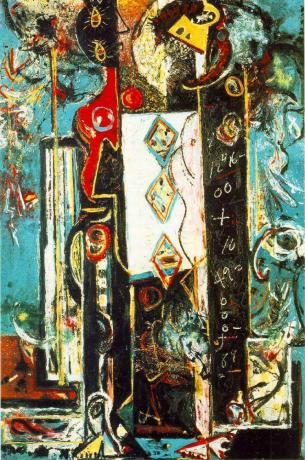
2. Blue or Moby Dick (1943)

3. The key (1946)

4. Full Fathom Five (1947)
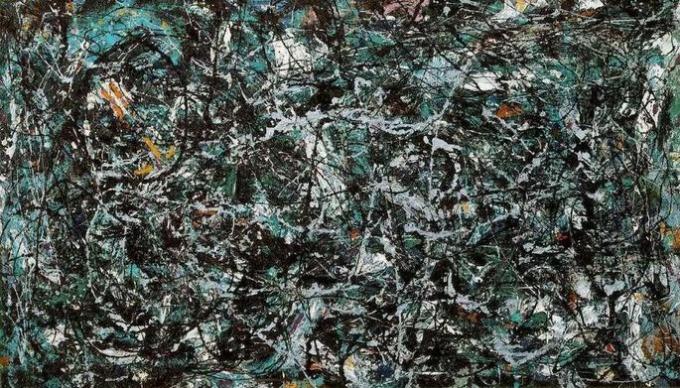
5. Number 8 (1948)

6. One: No. 31 (1950)

7. Ocean Greyness (1953)
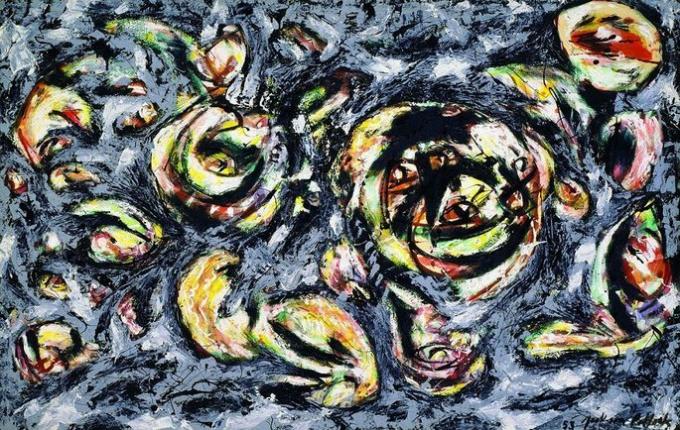
Jackson Pollock Movie
In 2000, a film was made about the artist, directed and acting by Ed Harris. Check out an excerpt from the film, which shows the character in creative action.

